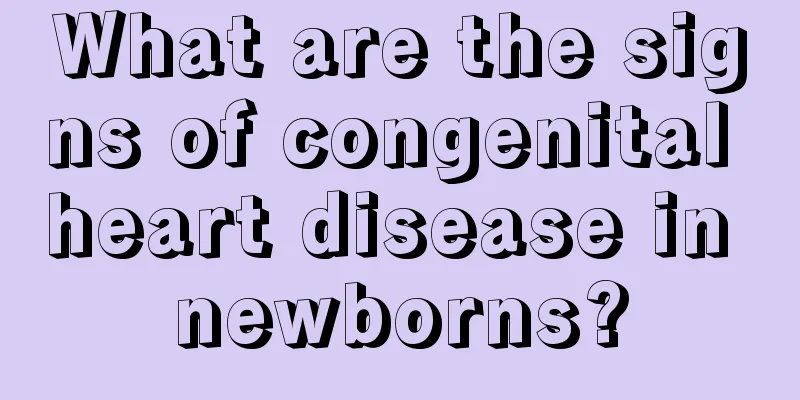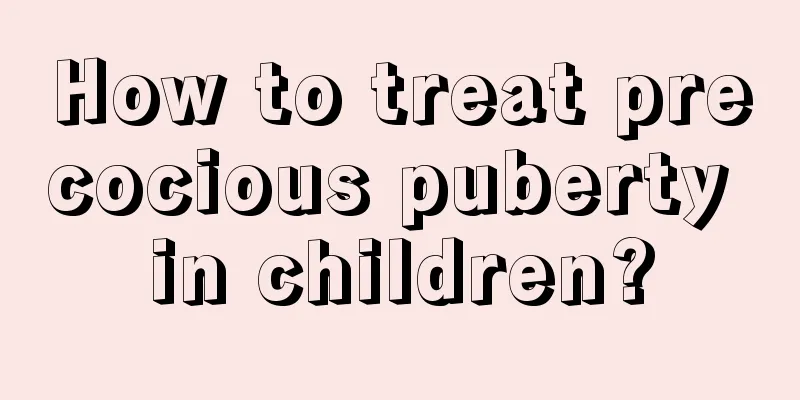What are the signs of congenital heart disease in newborns?

|
Congenital cardiovascular disease is the most common type of congenital malformation and a common heart disease in newborns. Heart disease is extremely harmful and seriously affects our physical and mental health. With the development of science and technology and the improvement of medical standards, this disease can now be treated. However, only if we understand the signs can we send the child to the hospital in time. So, what are the signs of congenital heart disease in newborns? 1. Heart failure Neonatal heart failure is considered an emergency and is usually caused by a more severe heart defect. Its clinical manifestations are due to congestion of the pulmonary circulation and systemic circulation and reduced cardiac output. The children are pale, short of breath, have difficulty breathing and tachycardia. The heart rate can reach 160-190 beats per minute and the blood pressure is often low. You can hear the rhythm of galloping horses. The liver is enlarged, but peripheral edema is less common. 2. Cyanosis It occurs due to right-to-left shunting, which mixes arterial and venous blood. It is most obvious on the tip of the nose, lips, and nail beds. 3. Squatting Children with cyanotic congenital heart disease, especially those with tetralogy of Fallot, often show squatting signs after activities. This can increase systemic vascular resistance and thus reduce the right-to-left shunt caused by the septal defect, while also increasing venous blood return to the right heart, thereby improving pulmonary blood flow. 4. Pulmonary Hypertension When a patient with a septal defect or patent ductus arteriosus develops a syndrome of severe pulmonary hypertension and cyanosis, it is called Eisenmenger's syndrome. The clinical manifestations are cyanosis, polycythemia, clubbing of fingers (toes), and signs of right heart failure such as distended jugular veins, hepatomegaly, and edema of surrounding tissues. At this time, the patient has lost the opportunity for surgery and the only thing waiting is heart and lung transplantation. Most patients die before the age of 40. 5. Clubbing and polycythemia Cyanotic congenital heart disease is almost always accompanied by clubbing of fingers and toes and polycythemia. The mechanism of clubbing: chronic hypoxia at the extremities, metabolic disorders, and toxic injuries. The ends of fingers or toes grow, thicken, and become clubbed. 6. Developmental Disabilities Children with congenital heart disease often develop abnormally, with symptoms such as being thin, malnourished, and developmentally delayed. Through the introduction above, I believe you already know the signs of congenital heart disease in newborns! When a child is found to have the above abnormal reactions, the child should be sent to the hospital for examination and treatment in time. Heart disease also has genetic signs. If there is a family history of heart disease, then the child must be treated carefully and it is best to check whether the child is healthy. |
<<: What are the symptoms of congenital heart disease in newborns?
>>: Nursing methods for newborns with congenital heart disease
Recommend
The reason why children have repeated fevers for several days
Every child's physical condition is different...
What to do if children's nails are layered
Some children's nails have abnormal condition...
How to cook duck meat for babies
The chewing function and digestive system develop...
Is premature infant apnea serious?
Respiratory apnea is a common phenomenon among pr...
What causes dry eyes in children?
We all know that adults will have dry eyes when f...
The child suddenly developed a fever without any symptoms
Fever is a common symptom in children, and there ...
What medicine should children take for laryngitis
Pediatric laryngitis is one of the common throat ...
Why do three-month-old babies sweat on their palms and soles?
The hands and feet of three-month-old babies are ...
What is the normal body temperature for a newborn?
Generally speaking, the normal body temperature o...
Symptoms of hand and foot disease
Compared with adults, children have very poor phy...
What is the importance of early education?
The physical health of children is something that...
The severity of constipation in one-month-old babies
Infant constipation generally refers to a decreas...
What are the symptoms of convulsions after a child has a fever?
When family members see that their children have ...
Diet therapy for nasal congestion and runny nose in seven-month-old babies
The morbidity rate of babies at 7 months old is r...
What to eat to improve intelligence? This thing is good for your brain!
A child's intelligence and IQ determine his f...









